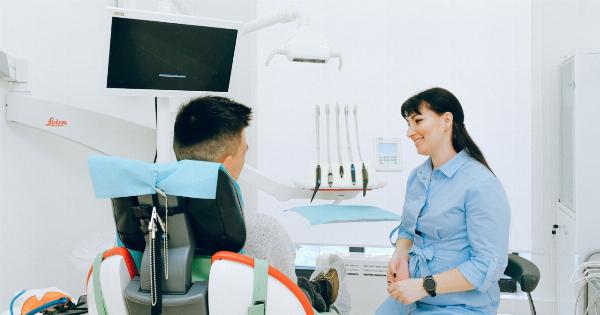In today’s modern world, there are numerous cosmetic procedures available that can help improve your appearance and boost your confidence. One such procedure is a necklift.
A necklift is a surgical procedure that aims to tighten and tone the skin and muscles of the neck, giving you a more youthful and rejuvenated appearance. But before you jump into any cosmetic procedure, it’s essential to understand what it entails and whether it’s the right option for you.
What is a Necklift?
A necklift, also known as a lower rhytidectomy, is a surgical procedure that specifically targets the neck area. The procedure is performed to address sagging skin, excess fat deposits, and a lack of muscle definition in the neck.
These common concerns are often a result of aging, weight loss, or genetic predisposition.
Candidates for a Necklift
While a necklift can provide remarkable results, it may not be suitable for everyone. Ideal candidates for a necklift typically have the following characteristics:.
- Significant sagging or loose skin in the neck area
- Excess fat deposits under the chin and along the jawline
- Loss of muscle tone in the neck
- Healthy individuals with no serious medical conditions
The Necklift Procedure
Before undergoing a necklift, it’s crucial to consult with a board-certified plastic surgeon who specializes in facial rejuvenation.
During your consultation, your surgeon will evaluate your overall health, examine your neck and facial structure, and discuss your desired outcome. They will explain the procedure in detail, including any potential risks or complications.
The necklift procedure typically involves the following steps:.
Step 1: Anesthesia
Before the surgery begins, you will be given anesthesia to ensure your comfort throughout the procedure. This may be general anesthesia or local anesthesia with sedation, depending on the complexity of your case and your surgeon’s recommendation.
Step 2: Incisions
Once you’re under anesthesia, your surgeon will create discreet incisions either behind your ears or under your chin. The placement of the incisions may vary based on your specific needs and the surgical technique chosen.
Step 3: Tissue Repositioning
After the incisions are made, your surgeon will reposition the underlying tissues, including muscles, to create a more defined neck contour. This step helps address both sagging skin and weakened muscles, resulting in a more youthful appearance.
Step 4: Fat Removal
If you have excess fat under your chin or along the jawline, your surgeon may perform liposuction to remove these unwanted fat deposits. This step can further enhance the contours of your neck and jawline.
Step 5: Skin Tightening
Following tissue repositioning and fat removal, your surgeon will carefully trim away any excess skin. They will then redrape and tighten the remaining skin to achieve a smoother, more youthful appearance.
Step 6: Incision Closure
Once all the desired adjustments have been made, your surgeon will meticulously close the incisions using sutures or skin adhesives. They may also use drainage tubes to prevent the buildup of fluids.
These tubes are typically removed within a day or two after the surgery.
Recovery and Results
After your necklift procedure, you can expect some swelling, bruising, and discomfort. Your surgeon will provide specific instructions on how to care for your incisions and manage any initial discomfort.
It’s vital to follow these instructions meticulously to ensure optimal healing.
While individual recovery experiences may vary, most patients can resume light activities within a week and return to their usual routines within two to three weeks.
However, strenuous exercises and activities should be avoided for a longer period as advised by your surgeon.
The results of a necklift are typically long-lasting. However, it’s important to note that aging and lifestyle factors can still affect the appearance of your neck over time.
Maintaining a healthy lifestyle and following your surgeon’s post-operative instructions can help prolong the results.
The Importance of Choosing a Skilled Surgeon
Choosing a board-certified plastic surgeon with significant experience in performing necklift procedures is crucial to achieve the best possible outcome.
A skilled surgeon can assess your unique needs, recommend the most suitable technique, and minimize the risk of complications.
During your consultations, be sure to ask your surgeon about their qualifications, experience, and view before-and-after photos of their previous necklift patients.
This will give you confidence in your decision and help you understand what to expect from the procedure.
Potential Risks and Complications
As with any surgical procedure, necklifts carry some potential risks and complications. These may include:.
- Adverse reactions to anesthesia
- Infection at the incision site
- Bleeding or hematoma formation
- Scarring
- Temporary or permanent nerve injury resulting in numbness or muscle weakness
- Asymmetry or uneven results
While rare, it’s crucial to be aware of these risks and discuss them with your surgeon before making a decision.
Should You Consider a Necklift?
Deciding whether to undergo any cosmetic procedure, including a necklift, is a personal choice.
If you’re bothered by the appearance of sagging skin, excess fat, or a lack of muscle tone in your neck, and you’re in overall good health, a necklift may be a suitable option for you.
However, it’s essential to have realistic expectations and understand that a necklift is not a one-size-fits-all solution.
Consulting with a qualified plastic surgeon can help you explore all your options, understand the potential risks and benefits, and make an informed decision based on your specific needs and desired outcome.






























